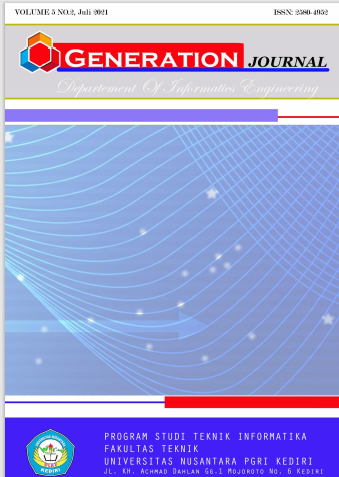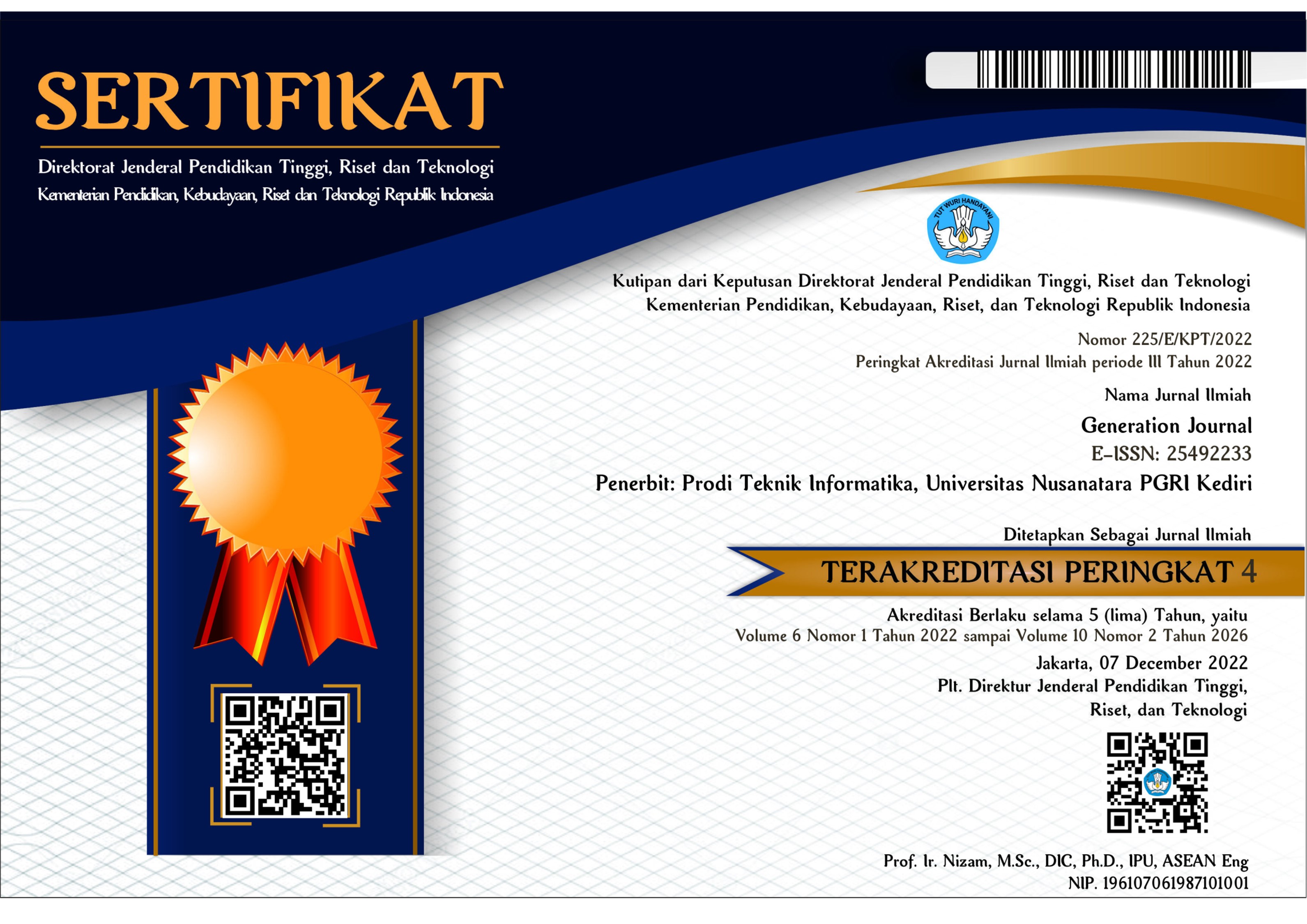Perbandingan Algoritma SVM dan SVM Berbasis Particle Swarm Optimization Pada Klasifikasi Beras Mekongga
DOI:
https://doi.org/10.29407/gj.v5i2.16075Keywords:
Classification, Data Mining, Mekongga Rice, Support Vector Machine (SVM), Particle Swarm Optimization (PSO)Abstract
Rice is the most important staple food in Indonesia. There are various types of varieties available, one of them is Inpari Mekongga variety. In Karawang, Mekongga rice type is the most popular and superior compared to others. However, this type of rice is often mixed with the other types because there are too many varieties and various other problems. Classifying varieties of rice types can be done to identify the types of rice. The classification of rice varieties in this research is divided into 2 classes, Mekongga and not Mekongga. The method that used in this reserach is Support Vector Machine (SVM) and Particle Swarm Optimatizon (PSO). SVM method was chosen because it basically handles the classification of two classes. Meanwhile, PSO method used to optimize the accuracy level of the SVM method. Combination from the two methods is very well used in classification data because it can increase the level of accuracy better. The purpose of this reserach is compare the accuracy of the 2 methods that used. The results from research is mekongga rice classification with Support Vector Machine has accuracy value 46.67% and AUC value 0.475. Meanwhile, using Support Vector Machine based on Particle Swarm Optimization (PSO) can help improve the classification of this mekongga rice with accuracy value 70.83% and AUC value 0.671.
References
[2] A. Supriatna, “Analisis Sistem Pemasaran Gabah/Beras (Studi Kasus Petani Padi di Sumatra Utara),” SOCA: Jurnal Sosial Ekonomi Pertanian, 2005, Vol. 5, No. 1, p. 43920.
[3] Ayyu Nurbait, ‘Klasifikasi Pada Varietas Beras Mekongga Berdasarkan Citra Menggunakan Algoritma Support Vector Machine,” Program Pasca Sarjana Ilmu Komputer, Univ. Singaperbangsa, Karawang, 2020.
[4] BPPT, “Badan Pengkajian Dan Penerapan Teknologi. In Luas Panen Dan Produksi Beras 2018,” 2018. [Online]. Avaliable:
https://www.bps.go.id/publication/2018/12/21/543c607a9ce62960d929060f/luas-panen-dan-produksi-beras-di-indonesia-2018-hasil-kegiatan-pendataan-statistik-pertanian-tanaman-pangan-terintegrasi-dengan-metode-kerangka-sampel-area-.html
[5] BPPT, “Kajian Konsumsi Bahan Pokok 2017,” 2017. [Online]. Avaliable: https://www.bps.go.id/publication/kajian-konsumsi-bahan-pokok-tahun2017.html
[6] H. Amalia, A. F. Lestar, dan A. Puspita, “Penerapan Metode Svm Berbasis PSO Untuk Penentuan Kebangkrutan Perusahaan,” Jurnal Techno Nusa Mandiri, 2017, Vol. 14, No. 2, pp. 131-136.
[7] I. Chofyan, H.U. Rustan, dan A. Hariyanto, “Upaya mempertahankan Kabupaten Karawang sebagai lumbung padi nasional,” 2015.
[8] I. Purnama, R. Saputra, A. Wibowo, “Implementasi Data Mining Menggunakan Crisp-Dm Pada Sistem Informasi Eksekutif Dinas Kelautan Dan Perikanan Provinsi Jawa Tengah,” In Prosiding Seminar Nasional Ilmu Komputer UNDIP 2012, 2014.
[9] K. P. Wijaya, M. A. Muslim, “Peningkatan Akurasi Pada Algoritma Support Vector Machine Dengan Penerapan Information Gain Untuk Mendiagnosa Chronic Kidney Disease,” In Prosiding 3rd Seminar Nasional Ilmu Komputer, Semarang, Universitas Negeri Semarang, 2016.
[10] W. Abbas, M. Riadi, dan I. Ridwan, “Respon tiga varietas padi (Oryza sativa L.) Pada Berbagai Sistem Tanam Legowo,” Jurnal Penelitian dan Pengembangan Agrokompleks, 2018, pp. 45-55.
Downloads
Published
Issue
Section
License
Authors who publish with this journal agree to the following terms:
- Copyright on any article is retained by the author(s).
- The author grants the journal, the right of first publication with the work simultaneously licensed under a Creative Commons Attribution License that allows others to share the work with an acknowledgment of the work’s authorship and initial publication in this journal.
- Authors are able to enter into separate, additional contractual arrangements for the non-exclusive distribution of the journal’s published version of the work (e.g., post it to an institutional repository or publish it in a book), with an acknowledgment of its initial publication in this journal.
- Authors are permitted and encouraged to post their work online (e.g., in institutional repositories or on their website) prior to and during the submission process, as it can lead to productive exchanges, as well as earlier and greater citation of published work.
- The article and any associated published material is distributed under the Creative Commons Attribution-ShareAlike 4.0 International License














